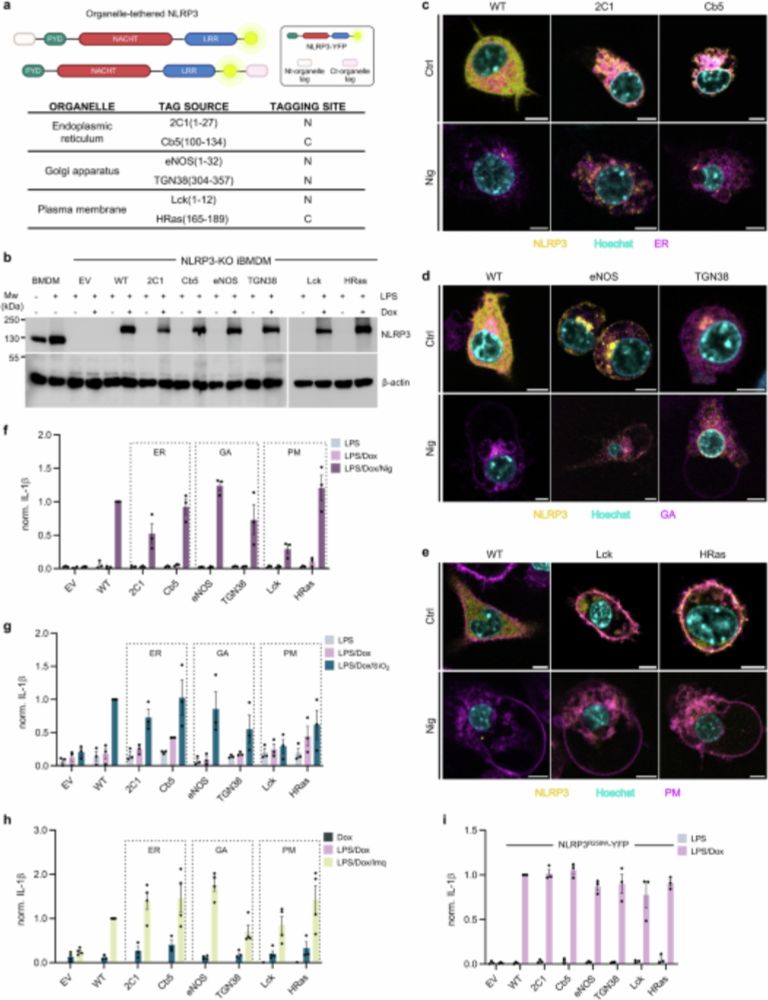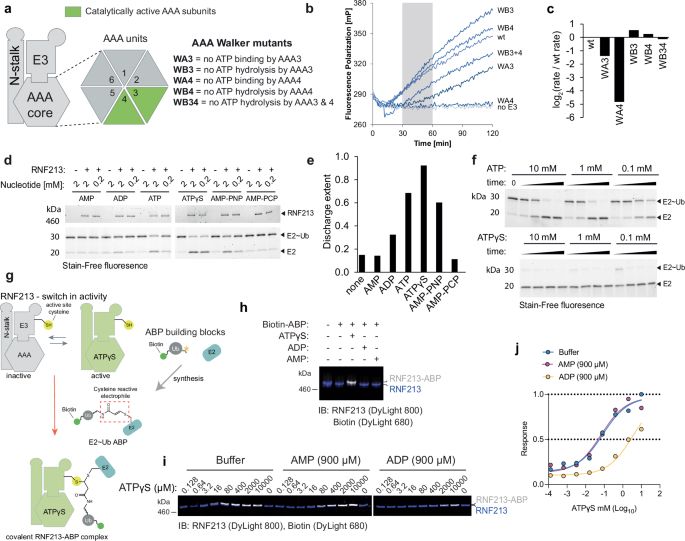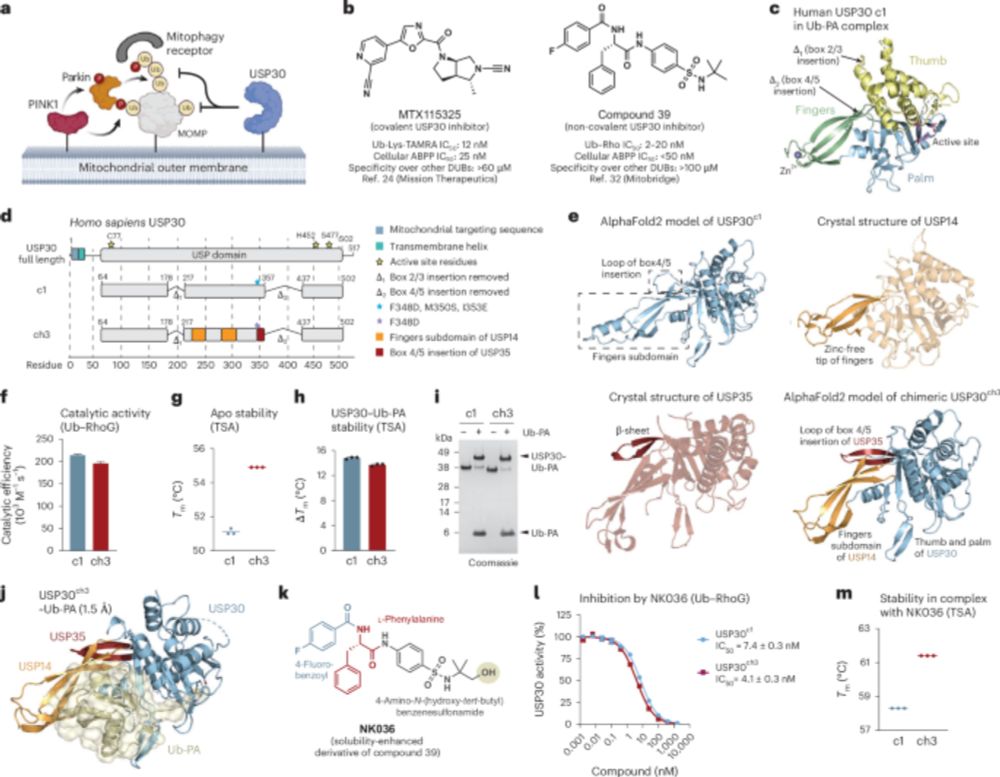Well, really happy to see that finally evidence showing VCP ruptures depolarised mitochondria outer membrane, as we have seen that VCP can also extract bacterial surface proteins and rupture cytosolic dwelling pathogens also.
29.09.2025 09:43 — 👍 1 🔁 0 💬 1 📌 0
Congratulations! Fantastic findings. Do you also find the hierarchical recruitment of GBP2-4 in these structures?
28.09.2025 12:00 — 👍 1 🔁 0 💬 0 📌 0

📢A new effector-triggered immunity role for GBP1! No place for pathogens to hide now that GBP1 can detect extracellular pathogens that hijack the actin cytoskeleton. Surprise*suprise* GBP1 does this independently of LPS! 🧵
biorxiv.org/content/10.1...
28.09.2025 10:34 — 👍 25 🔁 13 💬 4 📌 1
So grateful to the AIC team at Janelia! Three surreal weeks packed with months of learning, cutting-edge technology, and inspiring science. Huge thanks to Bob’s for the amazing food—it made everything even sweeter. Truly an experience of a lifetime that I’ll always cherish! 💛
#microscopy #IPALM #ExM
08.09.2025 18:47 — 👍 1 🔁 0 💬 0 📌 0
Incredibly honoured and grateful to receive the 2025 Angelika Amon Young Scientist Award! Deep thanks to my supervisor @anirban-banerjee.bsky.social, friends, lab colleagues, Department of Biosciences and Bioengineering, and @iitbombay.bsky.social for their unwavering support. Simply Lovely.
30.08.2025 16:38 — 👍 4 🔁 1 💬 0 📌 0
So cool. Congratulations. Maybe after ubiquitination, AR will be pulled out from the chromatin, or it can fall off spontaneously.
24.07.2025 09:26 — 👍 1 🔁 0 💬 1 📌 0

A light-regulated circadian timer optimizes neutrophil bactericidal activity to boost daytime immunity
The neutrophil clockwork boosts daytime immunity against bacterial infection.
Tick Tock Neutrophil Clock
Hall Lab (Auckland) with zebrafish model find light boosts the circadian protein Per2, which enhances ROS and hmgb1a expression via a BMAL1–NF-κB enhancer
End result: Better bacterial clearance and survival—a circadian clock-gated boost for daytime innate immune function
24.05.2025 05:58 — 👍 17 🔁 3 💬 1 📌 0
Cool insights.
24.05.2025 04:56 — 👍 1 🔁 0 💬 0 📌 0
If you're into host-pathogen interactions and cell-autonomous immunity, this is a must-attend! Stellar speaker lineup and exciting science all around. Also, catch work from our lab being presented!"
#immunity #conference #india #embo
20.05.2025 10:21 — 👍 1 🔁 0 💬 0 📌 0
Haven’t shared this in a while. But the #ubiquitin and #ubl Starter Pack now includes 116 profiles to follow if you’re interested in the field: signalling, structure and biochemistry, biology, mechanisms, proteostasis, TPD, chemical biology… Check out the list and let me know if you are missing.
13.05.2025 10:04 — 👍 14 🔁 5 💬 0 📌 0
Congratulations! So many ways we can sense threats, a detailed and layered system.
14.05.2025 04:49 — 👍 1 🔁 0 💬 0 📌 0

Left: Group of three T3SS localizing in the same zone of the bacteria surface. T3SS n°1 and 2 contact, deform, and perforate the vacuole membrane at the same spot. T3SS n°1 needle (83 nm) is long and seems to deviate from basal body axis showing that strong constraints between T3SS and the vacuole at are play. The locally relaxed vacuole to bacteria space (~50–55 nm) potentially limits additional damage by the T3SS n°3 needle (56 nm) that only slightly deforms the membrane. Right: Model of initial vacuolar membrane breaching by T3SS-induced mechanoporation. Shigella actively enters host cells in a specialized endomembrane compartment, the vacuole, that is rapidly injured and ruptured for cytosolic access. After host cell entry, the vacuole membrane is intact and tightly juxtaposed to the surface of Shigella, permitting contact between T3SSs and the endomembrane. In the authors’ proposed model, vacuole membrane injury is supported both by the vacuole tightness and the length of individual T3SSs.
How do intracellular #bacteria breach vacuoles to enter the host cytosol? @leaswistak.bsky.social @matthijnvos.bsky.social @enningalab.bsky.social &co show that #Shigella uses its T3SS system to damage endomembranes via mechanoporation to initiate cytosolic access @plosbiology.org 🧪 plos.io/4jXrr9Z
06.05.2025 12:46 — 👍 48 🔁 22 💬 2 📌 4
Amazing work, congratulations.
05.05.2025 16:26 — 👍 2 🔁 0 💬 0 📌 0

This is a poster advertising the LINE scientific symposium aimed at early career researchers working in infection. Displayed is an electron microscope image showing two salmonella bacteria attached to a cells causing the cell membrane to ripple. Below the image, the organisational details about the symposium are shown.
We can see our ECR-focused LINE symposium already on the horizon (9th of June) @crick.ac.uk. shorturl.at/MyWNl 🥳
You can submit your abstracts (talk or poster) until the EXTENDED DEADLINE on the 12th of May here: shorturl.at/7KuXL
Free registration shorturl.at/wLyWY
We're excited to see you there!
28.04.2025 14:07 — 👍 12 🔁 5 💬 2 📌 4
Congratulations. How amazing this battle is turning out to be, between host and pathogens.
19.04.2025 05:01 — 👍 0 🔁 0 💬 0 📌 0
Amazing analogy. Thank you for sharing.
13.04.2025 07:23 — 👍 0 🔁 0 💬 0 📌 0
Happy to share my Ph.D work!!
Our latest paper shows VCP/p97 uses its tweezer-like action to tear invading bacteria apart — a powerful cellular defense! 🦠
@natmicrobiol.nature.com
@BsbeIitb @iitbombay @CSIR
This was years of hard work! Thanks all🙌
#microbiology #cellautonomous #immunity #ubiquitin
12.04.2025 13:45 — 👍 7 🔁 1 💬 0 📌 0
Associate Professor, Immunologist, Physician-Scientist. Studying human immunology, innate immunity, host-virus interactions for better diagnosis, treatment, prevention. Opinions are my own.
News from the Sternberg lab at Columbia University, Howard Hughes Medical Institute.
Posts are from lab members and not Samuel Sternberg unless signed SHS. Posts represent personal views only.
Visit us at www.sternberglab.org
Professor and Chair, Department of Microbiology, University of Chicago. Study the pathogenesis of tuberculosis, and other mycobacterial infections. Opinions my own.
Venture of HHMI to make pre-commercial microscopes available to a broad audience. Learn more at https://www.aicjanelia.org/
- scientist @AIC Janelia
- theatre lover
-🇩🇪🇺🇸
"Understanding Ubiquitylation: From Molecular Mechanisms to Disease", Research Training Group at the University of Würzburg
https://www.uni-wuerzburg.de/grk2243/
https://www.ubiquitin-wuerzburg-2025.de/
Structural biologist and biochemist. CNRS researcher at CBM Orléans @cbm-upr4301.bsky.social. Interested in protein modifications & interactions. Also husband, dad of 2, friend, ☧. Personal website: msuskiewicz.github.io
Genome editing, functional genomics, and cells figuring out how to eat themselves without dying. Professor of Genome Biology at ETH Zürich.
Protein and coffee lover, father of two, professor of biophysics and sudo scientist at the Linderstrøm-Lang Centre for Protein Science, University of Copenhagen 🇩🇰
Cellular neurobiologist TIFR India who loves genetics, live imaging and worms. Science is fun, let's go exploring.
Sci comm, write bad poetry, 2 girl mom
lab: https://tinyurl.com/5n7s6ens
https://scholar.google.co.in/citations?user=c4zDSQ8AA
Group Leader at the IIMCB_Poland, pokrzywalab.com. Founder of LumiRare (lumirare.com). Passionate about proteostasis, the ubiquitin-proteasome system, exophers, and C. elegans research. Exploring rare diseases and molecular mechanisms of aging.
Professor and Head of the Division of Molecular Therapeutics in MCB, UC Berkeley
Founder, Nurix and Lyterian Therapeutics
Excited about stress responses, ubiquitin, proteasome, targeted protein degradation, drug discovery
Chemical Biologist & Research Groupleader at Max Planck & TU Dortmund. Interested in DUBs, proteases, ubiquitin, the outdoors and more. Views are my own. cgc.mpg.de/gersch
Microbes & mucus 🤩 | Gut Microbial Ecology | Wageningen University, NL
Professor IIT Bombay, Mumbai, India. Physics & Biology. Chromatin. Self-assembly. https://www.bio.iitb.ac.in/~ranjith/
Max Planck Institute for Biology, Tübingen & University of Warsaw. Using computational tools to study protein evolution and function.
Postdoc in the lab of Patrick Chinnery at the University of Cambridge. Lover of mitophagy and quality control. Fervid European. Obsessive environmentalist. Yoga enthusiast. Way too excited. Curator of mitophagy newsletter - https://biomed.news/bims-tofagi
Physician-scientist at UC San Diego, Microbiology, Immunology, Novel Drug and Vaccine Discovery, #IDSky, Mentoring and Supporting STEM Career Development.
Enjoy exploring the outdoors, world cultures, sports, comedy, community.
http://nizetlab.ucsd.edu








